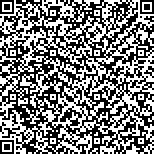下载中心
优秀审稿专家
优秀论文
相关链接
摘要

混合像元分解模型是定量遥感研究的重要组成部分,为各种地学应用提供了更精细的亚像元级地物信息,这一领域受到国内外学者们广泛关注。本文围绕混合像元分解研究的4个核心问题——光谱混合模型、端元提取、模型反演方法以及解混精度评估,总结了近20年来混合像元分解的重要研究进展,分析和介绍了典型算法模型的原理和思路。进一步阐述了现有研究在一些关键问题上存在的不足,如目前仍缺乏公认的线性和非线性模型的选择判据、已有的混合像元分解模型无法抑制由端元光谱相关造成的共线性问题。最后总结了混合像元分解未来的发展趋势和值得探索的研究方向。如结合辐射传输模型和地面试验,定量分析多次散射的影响机制,以及结合克服共线性的统计回归模型。
Spectral Mixture Analysis (SMA) is one of the main topics in quantitative remote sensing research. It is able to provide land cover information at sub-pixel levels for practical applications. With the emergence of improved algorithms, SMA has made significant progress in many aspects, including spectral mixture models, endmember determination, endmember fraction inversion, and accuracy assessment. This study focused on these four key components in SMA and reviewed the available models and algorithms developed in last two decades. Moreover, the deficiencies of existing studies were analyzed. These deficiencies include the absences of widely accepted model selection criteria for linear and nonlinear spectral mixture analysis models and the unstable inversion of existing spectral mixture analysis caused by the high spectral correlation between endmembers. Finally, the study summarized the directions for future research, which include quantitatively evaluating the amplitude and spectral shape of multiple scattering among endmembers, identifying the factors that contribute to the nonlinear component in mixture observed signals by using radiative transfer models and laboratory measurement experiments, improving the robustness of linear spectral mixture analysis models, and suppressing high sensitivity to noise error signals resulting from collinearity with some insights from available statistical regression models for collinearity issues.

